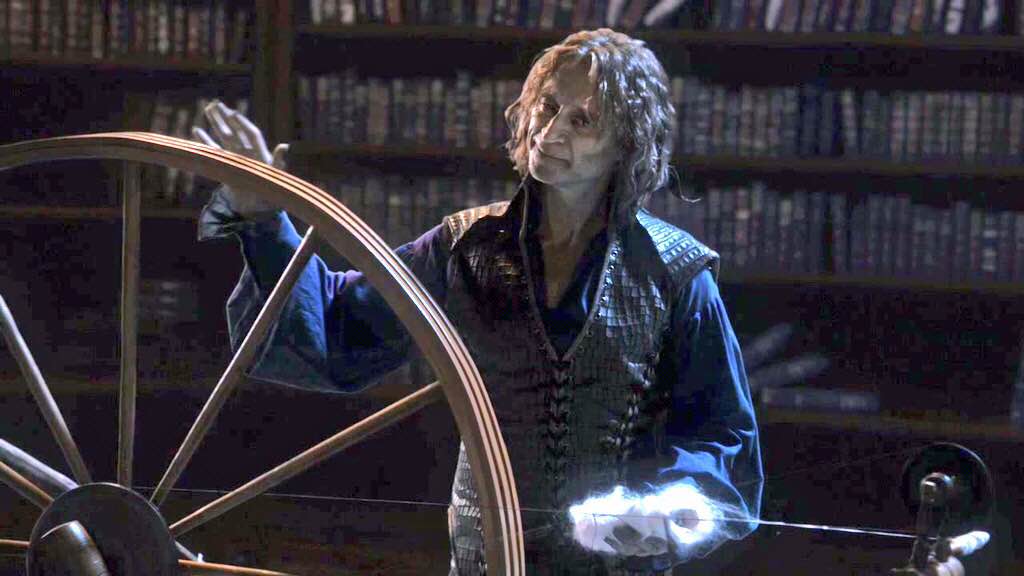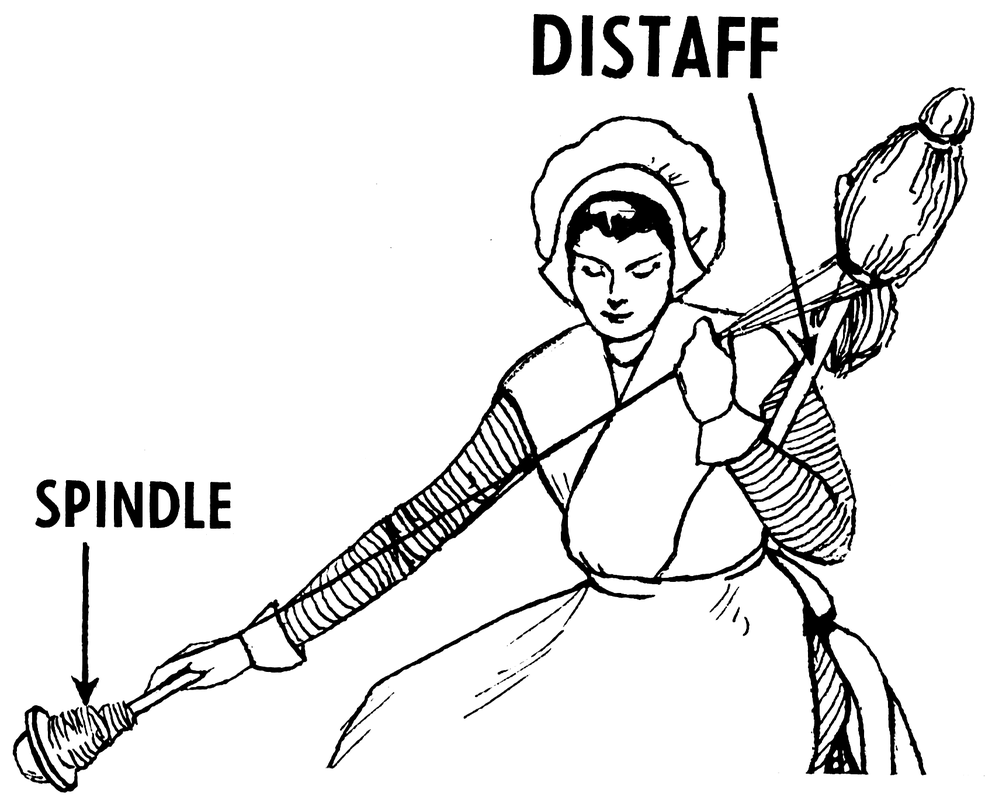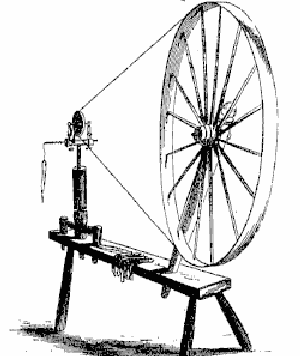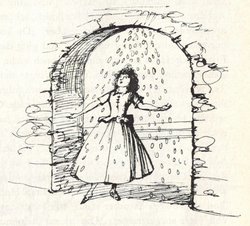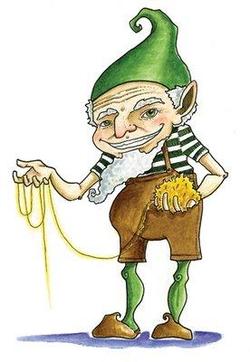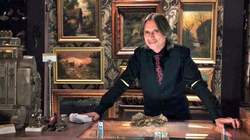|
Spinning Gold by Teresa Martin --@Teresa__Martin Rumplestiltskin operating his spinning wheel on Once Upon a Time has proven to be an iconic image for the first season of the hit show. But long before ABC premiered its version of this character, the image of a protagonist spinning was repeatedly featured not only in the Grimm’s fairy tale “Rumplestiltskin,” but in innumerous stories collected by the brothers. This art of spinning is difficult and ultimately complex, not only by the mechanization, but by what it represented to society as a means of livelihood practiced by women. Grimm’s Fairy Tales illustrate this history. Moreover, there is an added feature in their tales because spinning is presented with gold as the companion symbol. An examination of these two images can therefore bring a richer understanding of the themes the stories propose, and serve to explain why the one glaring exception to the pattern, Rumpelstiltskin, is so notorious in folklore. One of the images imbedded in the minds of all children who have watched the Disney Classic Sleeping Beauty is that of Aurora pricking her finger on a spinning wheel. However, this image first appeared to readers as a spindle. Archaeological evidence proves that spindles have been used by humans as early as the Stone Age (Castino, 8). By the Eleventh Century the spindle was in common use both in the Eastern and Western world. This simple machine contains two parts: the whorl and the shaft. A whorl is shaped like a drum and serves as a weight at the bottom of the shaft, the long stick-like part ending in a point. The spindle is often used in combination with a distaff which holds the wool or flax. Yet the spinning wheel can also rightly be a means to illustrate “Sleeping Beauty” since it also contains a spindle. The spinning wheel, more complex and a later invention, consists of a wheel which powers the device by a cord connected to a horizontal spindle. This wheel is turned with the right hand while the left feeds the flax onto the spindle which winds the thread or wool. While there are many Grimm stories that contain spinning and gold, a few can be examined to illustrate the trend. In “The Spindle, The Shuttle and the Needle,” a young woman was a hard worker who supported herself by spinning. A prince happened to be looking for a bride when he saw her at her trade, and then went away, apparently unimpressed. Her spindle then magically jumped out of her hands and carried a golden thread trailing behind it. This magical thread ran out just when the spindle reached the prince, who decided to follow it back to the lady’s home. Here he looked at her again ‘in her poor garments, but [shining] out from within them….” and thought her “the poorest, but also the richest.” He then chose her as his bride (Grim, Loc 9333-9337). Another tale, “The Nixie of the Mill-Pond,” tells of a young woman who lost her husband when he was seduced by a nixie and trapped in a lake. The unhappy wife was assisted in rescuing her husband by an old woman who gave her tools to assist her. One was a golden comb, but the husband was only partly returned before he was seized by a wave and brought back to the lake. Then a flute was played by the young wife, with the same result. Finally, a golden spinning wheel is given on which she was to spin by the light of the full moon. This enabled the young man to escape from his prison and, after more adventures, be fully reunited with his wife. A final example of this connection is the story of “Mother Holle.” This is the tale of a step-mother who made her step-daughter work so hard that she would spin until her fingers bled. While toiling one day, a part of her spinning device fell into a well when she was wiping blood from it. She was then forced to go into the well to fetch the lost part, and was transported to a magical land where an elderly lady lived named Mother Holle. Mother Holle took the girl in and only asked that she look after her. After a time, Mother Holle gave her the means to go home and, since the girl had been kind and served her well, she was drenched with a golden rain shower. The gold within this torrent stuck to the maiden. Mother Holle told her that this was her reward. After she returned home, the girl was welcomed because she brought wealth. Then the step-mother sent her natural daughter to Mother Holle, hoping for more gold. But this girl was lazy and would not help the elderly lady. Mother Holle sent her away and as she left, a kettleful of pitch fell on her for her recompense. The pitch never left her. The common theme within these tales is that gold is a reward for those who are worthy. Also gold, being the symbol of the divine, can be given as a gift to conquer evil. These are bestowed upon the young ladies when they engage in their traditional industry. The feminine monopoly on spinning is shown explicitly in “The Twelve Huntsmen.” The plot features a king who seeks to know the gender of suspected imposters. The truth is sought by presenting the ‘men’ with spinning wheels to see if they would care, for only a woman would be interested in a spinning wheel. This connection of women to spinning is also proven to be widespread when it is considered that spinning is applied independently of these stories as the symbol for women in many different cultures and times (Tresidder, Loc 4329). Yet there is one very famous exception to this rule, that which viewers of Once Upon a Time do not need to be reminded. A masculine imp, Rumpelstiltskin, is the most famous spinner of all. In this tale the entire premise of spinning and gold is different. In the former stories, gold and spinning rescued the women, or was given as a reward for industriousness and virtue. In contrast, the story of Rumpelstilskin connects gold with a horror that is almost as disturbing as the creature himself. The anticipation of gold, and its appearance or lack thereof, is a matter of life and death for the unfortunate Miller’s daughter. She was the victim of her father’s pride when he boasted that she could spin straw into gold. This is an aberrant act, for gold cannot be made. Rather it is a product only of nature and is symbolically connected with the divine. Seeking to make gold without nature or as a gift from a god is the hubris of seeking to take upon oneself power that is not gained by right. Hence it is fitting that Rumplestiltskin is a demonic character since demons are those that are jealous of that which belongs to the deities. His end shows him tearing himself in two and falling back into hell. This is a literal manifestation of what happens to people who feed on evil: they are torn in two until they destroy themselves. Rumplestilskin in Once Upon a Time is also a man who spins, and like the Grimm character on which he is based, is a man torn in two, both by his Enchanted Forest/Storybrooke personas, as well as the beast he became when he accepted his curse. Spinning is supposed to be an industrious business, but Rumplestiltskin spins to forget. He unnaturally spins straw into gold, but without purpose, as Belle observes in the episode “Skin Deep.” He does not even spin gold for riches since he has gold to last a life-time. Moreover, the audience learns throughout the character’s development that he certainly does not succeed in his goal. Every episode shows that he is haunted by past actions. His enterprise is futile because spinning creates, it does not erase. The Storybrooke counterpart of Rumplestilskin, Mr. Gold, is not spinning at a wheel, but rather is similar to the Greek mythological Fates whose spinning represents the control of people’s lives. He constantly takes glee in manipulating others, most likely because he is a man who has no real control over his destiny. His entire miserable life is spent on the obsession that once he has what he wants, he will be content. However, when he is within moments of rejecting his curse, his beast–like persona stops him from taking the step to freedom. He cannot follow Baelfire into the vortex, and neither can he continue kissing Belle in order to break free from his misery. Yet his regret for these choices cannot be hidden. When he thinks that he has found his son, he bares his soul, sobbing and begging forgiveness. Within a minute of re-uniting with Belle, he is instantly moved to passion and tears. These uncontrolled emotions burst forth, like sunlight when it breaks through a cloud. Similar to his nemesis Regina, when he is with those he loves, he becomes his true self. Unfortunately, these moments never last for more than a few minutes before he renews his devotion to the darker part of his soul. This schizophrenia is as powerful, destructive, and unnatural as spinning straw into gold. Mr. Gold is therefore doomed like Grimm’s Rumplestiltskin to tear himself in two until he destroys or frees himself. The delight of the Grimm tales is that they reproduce traditional imagery to retain the meaning of the stories they put into writing. An item as simple as a spindle and some flax can make the difference between a happy ending and a life of perdition. There are more tales to explore and enjoy in this rich genre as one reads to see which character will be rewarded by damnation or the gift of pure gold. Viewers of Once Upon a Time have the same pleasure of not knowing to what end Rumplestilskin spins by dabbling in this art, and guessing which scenario he will ultimately choose. Works Cited
Castino, Ruth. Spinning and Dyeing the Natural Way. New York: Van Nostrand Reinhold Company, 1974. Grimm, Jacob and Wilhelm. Household Tales by Brother’s Grimm. Trans. Margaret Hunt. Kindle Edition, Public Domain, 1884. Tresidder, Jack. The Watkins Dictionary of Symbols (Kindle Edition). London: Watkins Publishing, 2011.
0 Comments
Leave a Reply. |
OriginsExplore the Arthurian legend surrounding Lancelot, take a trip into the woods to discover the mythology behind Red Riding Hood or learn more about a modern day hero called Snow White. Origins provides unique insights and perspectives from talented writers into the characters we know and love, going far beyond the boundaries of Storybrooke. Archives
August 2016
Categories
All
|
